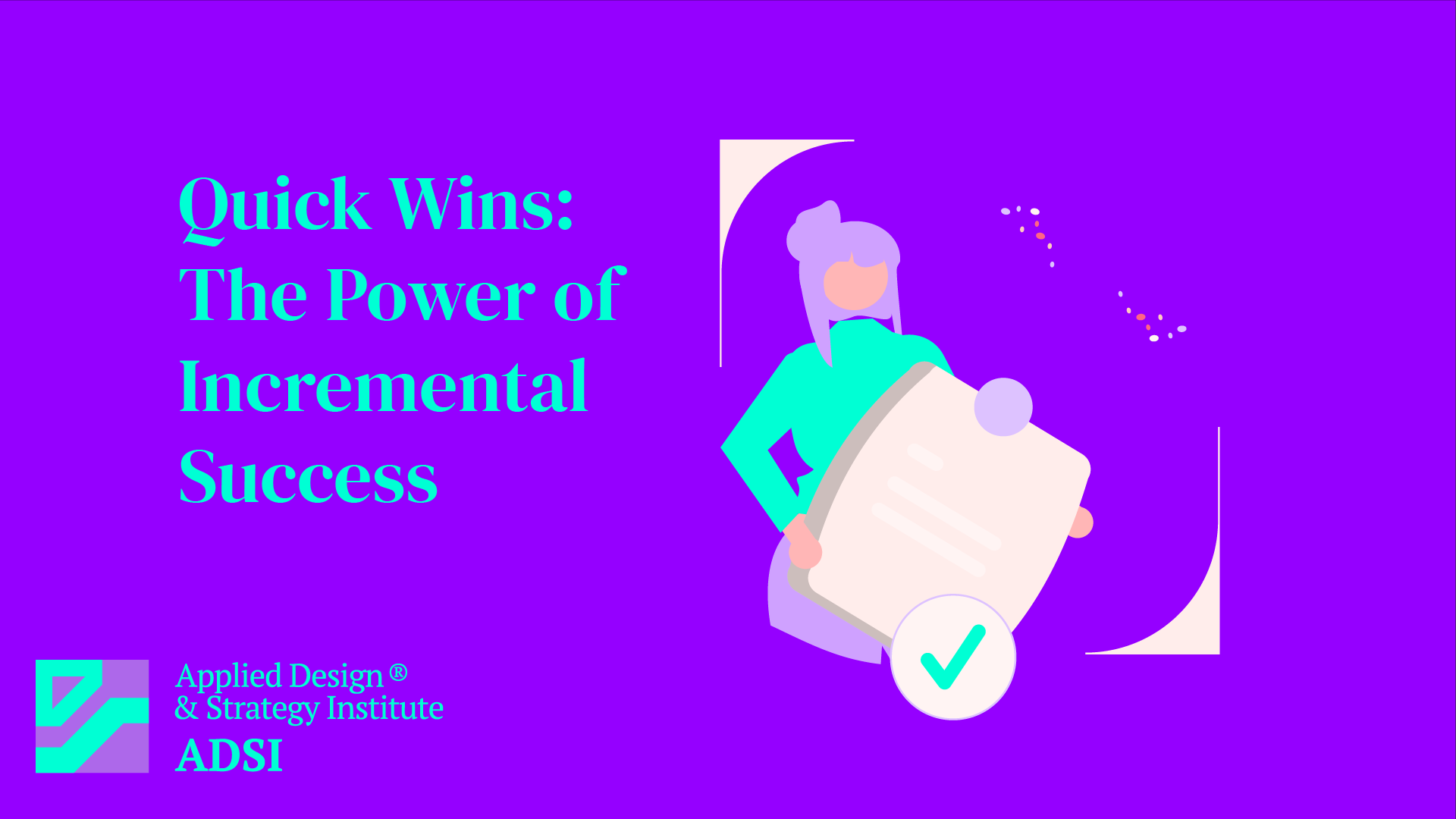Quick Wins: Unleashing the Power of Delivering Incremental Success
In the world of strategy and project management, the concept of “Quick Wins” has gained prominence as a strategic approach to achieving incremental successes that drive momentum and boost morale. Quick Wins involve identifying and executing small, achievable projects or actions that yield immediate positive results. In this article, we’ll delve into the intricacies of Quick Wins, their significance in various contexts, and how they contribute to overall success.
The Essence of Quick Wins
Quick Wins are about taking deliberate, focused actions to deliver tangible results swiftly. These actions are typically aimed at addressing specific challenges or goals, and they are characterized by their ability to generate noticeable and immediate benefits.
Key Principles of Quick Wins
- Visible Progress: Quick Wins should result in visible progress towards a larger goal, demonstrating that positive change is possible.
- Boosting Morale: Achieving Quick Wins can boost team morale and motivation, as they experience the satisfaction of success.
- Building Momentum: Quick Wins create momentum that can be leveraged for tackling more significant and complex challenges.
- Alignment with Goals: Quick Wins should align with broader strategic objectives and contribute to the overall mission or vision.
Examples of Quick Wins
- Business: Implementing a cost-saving measure that results in immediate expense reduction or launching a new product feature that enhances customer satisfaction.
- Project Management: Completing a critical project milestone ahead of schedule or resolving a long-standing project bottleneck.
- Leadership: Addressing a specific workplace issue or conflict and achieving a resolution that improves team dynamics.
Benefits of Quick Wins
Quick Wins offer several advantages across various domains:
- Motivation: Achieving early successes motivates teams and individuals, driving enthusiasm and commitment.
- Confidence: Quick Wins build confidence in the ability to achieve broader objectives.
- Resource Allocation: By prioritizing Quick Wins, organizations can allocate resources more efficiently and effectively.
- Stakeholder Engagement: Positive outcomes from Quick Wins can engage stakeholders and garner support for larger initiatives.
Application in Different Contexts
Quick Wins can be applied in a multitude of scenarios:
- Business Strategy: Companies can identify and execute Quick Wins to gain a competitive edge, such as optimizing a key process or improving customer service.
- Project Management: Project managers can incorporate Quick Wins to maintain team motivation and meet project milestones.
- Change Management: In change initiatives, leaders can use Quick Wins to demonstrate the benefits of the proposed changes and alleviate resistance.
- Personal Development: Individuals can set and achieve Quick Wins to make progress towards their goals, enhancing motivation and self-esteem.
Challenges and Considerations
While Quick Wins offer numerous benefits, they come with some challenges, such as:
- Risk of Superficiality: Quick Wins should not sacrifice long-term goals for short-term gains. They should align with strategic objectives.
- Resource Allocation: Careful resource allocation is essential to ensure that Quick Wins do not divert resources from critical initiatives.
- Sustainability: Quick Wins should contribute to lasting improvements, not just temporary fixes.
Conclusion
Quick Wins are a potent strategy for achieving incremental successes that drive motivation, build confidence, and create momentum in various contexts. By identifying and executing actions that yield immediate, visible benefits while aligning with broader goals, organizations and individuals can harness the power of Quick Wins to propel themselves towards greater achievements and sustained success.



Leave a Reply